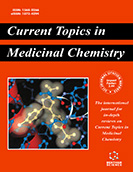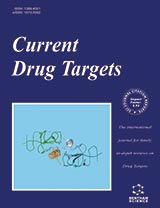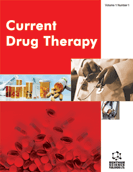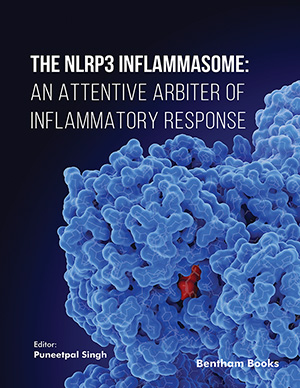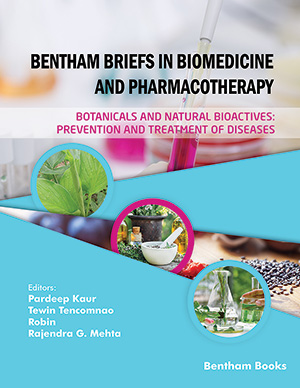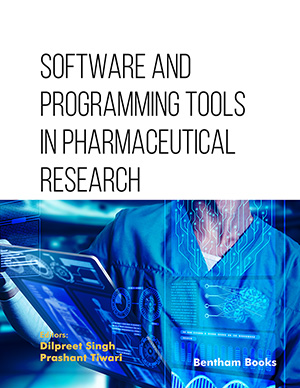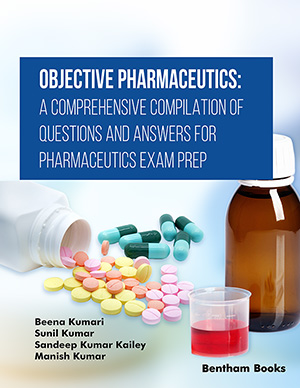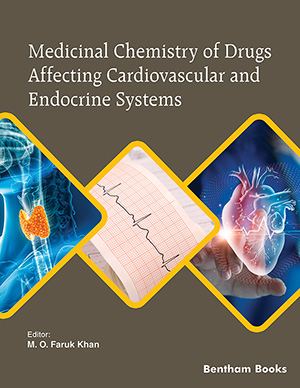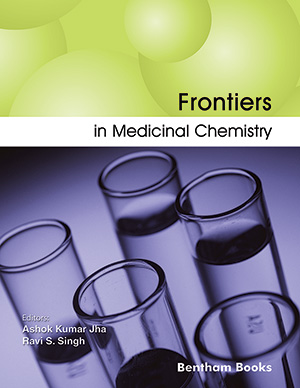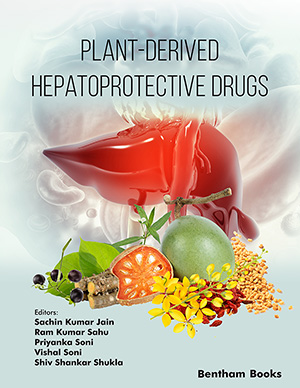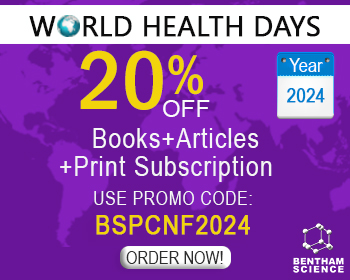Abstract
Membrane bound P-glycoprotein (Pgp) acts as an active transport pump. It plays a major role as a cause of multidrug resistance (MDR) and acts as a component of the blood-brain barrier. Pgp transports a wide variety of structurally unrelated compound from the cell interior into the extracellular space. Recent molecular modeling efforts, mostly in homology modeling and QSAR studies, have brought some understanding to the interactions between the protein and the drugs at the atomic level. We review the recent developments from the point of view of methodology.
Keywords: multidrug resistance, nucleotide binding domain, QSAR methods, transmembrane regions, ATP hydrolysis
Current Topics in Medicinal Chemistry
Title: Mini Review on Molecular Modeling of P-Glycoprotein (Pgp)
Volume: 7 Issue: 15
Author(s): Sookhee N. Ha, Jerome Hochman and Robert P. Sheridan
Affiliation:
Keywords: multidrug resistance, nucleotide binding domain, QSAR methods, transmembrane regions, ATP hydrolysis
Abstract: Membrane bound P-glycoprotein (Pgp) acts as an active transport pump. It plays a major role as a cause of multidrug resistance (MDR) and acts as a component of the blood-brain barrier. Pgp transports a wide variety of structurally unrelated compound from the cell interior into the extracellular space. Recent molecular modeling efforts, mostly in homology modeling and QSAR studies, have brought some understanding to the interactions between the protein and the drugs at the atomic level. We review the recent developments from the point of view of methodology.
Export Options
About this article
Cite this article as:
Ha N. Sookhee, Hochman Jerome and Sheridan P. Robert, Mini Review on Molecular Modeling of P-Glycoprotein (Pgp), Current Topics in Medicinal Chemistry 2007; 7 (15) . https://dx.doi.org/10.2174/156802607782194806
| DOI https://dx.doi.org/10.2174/156802607782194806 |
Print ISSN 1568-0266 |
| Publisher Name Bentham Science Publisher |
Online ISSN 1873-4294 |
Call for Papers in Thematic Issues
Chemistry Based on Natural Products for Therapeutic Purposes
The development of new pharmaceuticals for a wide range of medical conditions has long relied on the identification of promising natural products (NPs). There are over sixty percent of cancer, infectious illness, and CNS disease medications that include an NP pharmacophore, according to the Food and Drug Administration. Since NP ...read more
Current Trends in Drug Discovery Based on Artificial Intelligence and Computer-Aided Drug Design
Drug development discovery has faced several challenges over the years. In fact, the evolution of classical approaches to modern methods using computational methods, or Computer-Aided Drug Design (CADD), has shown promising and essential results in any drug discovery campaign. Among these methods, molecular docking is one of the most notable ...read more
Drug Discovery in the Age of Artificial Intelligence
In the age of artificial intelligence (AI), we have witnessed a significant boom in AI techniques for drug discovery. AI techniques are increasingly integrated and accelerating the drug discovery process. These developments have not only attracted the attention of academia and industry but also raised important questions regarding the selection ...read more
From Biodiversity to Chemical Diversity: Focus of Flavonoids
Flavonoids are the largest group of polyphenols, plant secondary metabolites arising from the essential aromatic amino acid phenylalanine (or more rarely from tyrosine) via the phenylpropanoid pathway. The flavan nucleus is the basic 15-carbon skeleton of flavonoids (C6-C3-C6), which consists of two phenyl rings (A and B) and a heterocyclic ...read more
 16
16
- Author Guidelines
- Graphical Abstracts
- Fabricating and Stating False Information
- Research Misconduct
- Post Publication Discussions and Corrections
- Publishing Ethics and Rectitude
- Increase Visibility of Your Article
- Archiving Policies
- Peer Review Workflow
- Order Your Article Before Print
- Promote Your Article
- Manuscript Transfer Facility
- Editorial Policies
- Allegations from Whistleblowers
- Announcements
Related Articles
-
Discovery of Small Molecule c-Met Inhibitors: Evolution and Profiles of Clinical Candidates
Anti-Cancer Agents in Medicinal Chemistry TRPA1 and TRPM8 Receptors May Promote Local Vasodilation that Aggravates Oxaliplatin-Induced Peripheral Neuropathy Amenable to 17β-Estradiol Treatment
Current Neurovascular Research Adenosine Deaminase in the Modulation of Immune System and its Potential as a Novel Target for Treatment of Inflammatory Disorders
Current Drug Targets Current Understanding of In-stent Restenosis and the Potential Benefit of Drug Eluting Stents
Current Drug Targets - Cardiovascular & Hematological Disorders Therapeutic Potential of the Modulation of Sphingosine-1-Phosphate Receptors
Current Medicinal Chemistry Metabolic Profile of Flunitrazepam: Clinical and Forensic Toxicological Aspects
Drug Metabolism Letters Stroke in Women
Recent Patents on Cardiovascular Drug Discovery Patent Selections
Recent Patents on Biotechnology A Multiple-Dose, Open-Label, Safety, Compliance, and Usage Evaluation Study of Epicutaneously Applied Diractin® (Ketoprofen in Transfersome®) in Joint/Musculoskeletal Pain or Soft Tissue Inflammation
Current Drug Safety Nanotechnology Based Theranostic Approaches in Alzheimer's Disease Management: Current Status and Future Perspective
Current Alzheimer Research Hypertension in China: Past, Present, and Future
Current Hypertension Reviews Targeting MDM2-p53 Interaction for Cancer Therapy: Are We There Yet?
Current Medicinal Chemistry Pharmacological Interference With Protein-protein Interactions of Akinase Anchoring Proteins as a Strategy for the Treatment of Disease
Current Drug Targets Photosensitizer Nanoparticles for Photodynamic Therapy
Current Bioactive Compounds The Entirely Subcutaneous Defibrillator (S-Icd): State of the Art and Selection of the Ideal Candidate
Current Cardiology Reviews Endothelin-1 and Human Platelets
Current Vascular Pharmacology Endothelial Dysfunction and Angiogenesis in Autosomal Dominant Polycystic Kidney Disease
Current Hypertension Reviews Emerging Vascular Risk Factors in Women: Any Differences from Men?
Current Medicinal Chemistry Microgravity Alters Cancer Growth and Progression
Current Cancer Drug Targets Reperfusion Therapies in Acute Ischemic Stroke
Recent Patents on CNS Drug Discovery (Discontinued)


